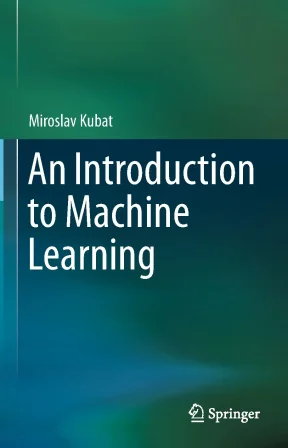I. Khám Phá Machine Learning Tổng Quan Cơ Bản
Machine Learning, hay còn gọi là Học máy, đã trở thành một lĩnh vực quan trọng trong công nghệ hiện đại. Nó cho phép máy tính học hỏi từ dữ liệu mà không cần lập trình cụ thể. Sự phát triển của trí tuệ nhân tạo đã thúc đẩy nhu cầu về các kỹ thuật học máy, từ đó mở ra nhiều cơ hội mới trong các lĩnh vực như y tế, tài chính và marketing.
1.1. Ứng Dụng Của Machine Learning Trong Cuộc Sống
Machine Learning được ứng dụng rộng rãi trong nhiều lĩnh vực. Ví dụ, trong y tế, nó giúp phân tích dữ liệu bệnh nhân để dự đoán bệnh tật. Trong marketing, nó tối ưu hóa chiến dịch quảng cáo dựa trên hành vi người tiêu dùng.
1.2. Lịch Sử Phát Triển Của Machine Learning
Lịch sử của Machine Learning bắt đầu từ những năm 1950 với các nghiên cứu ban đầu về thuật toán học máy. Tuy nhiên, chỉ đến những năm gần đây, nhờ vào sự phát triển của dữ liệu lớn và công nghệ tính toán, lĩnh vực này mới thực sự bùng nổ.
II. Những Thách Thức Trong Machine Learning Vấn Đề Cần Giải Quyết
Mặc dù Machine Learning mang lại nhiều lợi ích, nhưng cũng tồn tại nhiều thách thức. Một trong những vấn đề lớn nhất là dữ liệu không đầy đủ hoặc dữ liệu không chính xác. Điều này có thể dẫn đến các mô hình không chính xác và không hiệu quả.
2.1. Vấn Đề Dữ Liệu Trong Machine Learning
Dữ liệu là yếu tố quyết định trong Machine Learning. Nếu dữ liệu không đủ hoặc không chính xác, mô hình sẽ không thể học hỏi hiệu quả. Việc thu thập và xử lý dữ liệu là một thách thức lớn.
2.2. Khó Khăn Trong Việc Chọn Thuật Toán Phù Hợp
Có nhiều thuật toán khác nhau trong Machine Learning, mỗi thuật toán có ưu và nhược điểm riêng. Việc chọn lựa thuật toán phù hợp với bài toán cụ thể là một thách thức không nhỏ.
III. Phương Pháp Học Máy Các Kỹ Thuật Chính
Có nhiều phương pháp trong Machine Learning, bao gồm học có giám sát, học không giám sát, và học tăng cường. Mỗi phương pháp có cách tiếp cận và ứng dụng riêng, phù hợp với từng loại dữ liệu và bài toán.
3.1. Học Có Giám Sát Cách Tiếp Cận Cơ Bản
Học có giám sát là phương pháp phổ biến nhất, trong đó mô hình được huấn luyện trên một tập dữ liệu đã được gán nhãn. Điều này giúp mô hình học cách phân loại hoặc dự đoán dựa trên các đặc điểm của dữ liệu.
3.2. Học Không Giám Sát Khám Phá Dữ Liệu
Học không giám sát cho phép mô hình tìm ra cấu trúc trong dữ liệu mà không cần nhãn. Phương pháp này thường được sử dụng trong phân tích cụm và giảm chiều dữ liệu.
3.3. Học Tăng Cường Tối Ưu Hóa Quyết Định
Học tăng cường là phương pháp mà mô hình học hỏi thông qua việc tương tác với môi trường. Nó thường được áp dụng trong các trò chơi và robot tự động.
IV. Ứng Dụng Thực Tiễn Của Machine Learning Kết Quả Nghiên Cứu
Machine Learning đã được áp dụng thành công trong nhiều lĩnh vực, từ nhận diện hình ảnh đến phân tích ngữ nghĩa. Các nghiên cứu cho thấy rằng việc áp dụng các kỹ thuật học máy có thể cải thiện đáng kể hiệu suất và độ chính xác trong nhiều ứng dụng.
4.1. Nhận Diện Hình Ảnh Công Nghệ Đang Thay Đổi
Nhận diện hình ảnh là một trong những ứng dụng nổi bật của Machine Learning. Các mô hình học sâu đã cho thấy khả năng nhận diện và phân loại hình ảnh với độ chính xác cao.
4.2. Phân Tích Ngữ Nghĩa Từ Ngôn Ngữ Đến Dữ Liệu
Phân tích ngữ nghĩa sử dụng Machine Learning để hiểu và xử lý ngôn ngữ tự nhiên. Điều này giúp cải thiện các ứng dụng như chatbot và dịch máy.
V. Kết Luận Tương Lai Của Machine Learning
Tương lai của Machine Learning hứa hẹn sẽ tiếp tục phát triển mạnh mẽ. Với sự gia tăng của dữ liệu lớn và công nghệ tính toán, các ứng dụng của Machine Learning sẽ ngày càng đa dạng và phong phú hơn.
5.1. Xu Hướng Mới Trong Machine Learning
Các xu hướng mới như học sâu và học máy phân tán đang mở ra nhiều cơ hội mới cho nghiên cứu và ứng dụng. Những công nghệ này hứa hẹn sẽ thay đổi cách mà máy tính tương tác với dữ liệu.
5.2. Thách Thức Cần Đối Mặt Trong Tương Lai
Mặc dù có nhiều tiềm năng, nhưng Machine Learning cũng đối mặt với nhiều thách thức như đạo đức trong AI và bảo mật dữ liệu. Việc giải quyết những vấn đề này sẽ là rất quan trọng trong tương lai.
